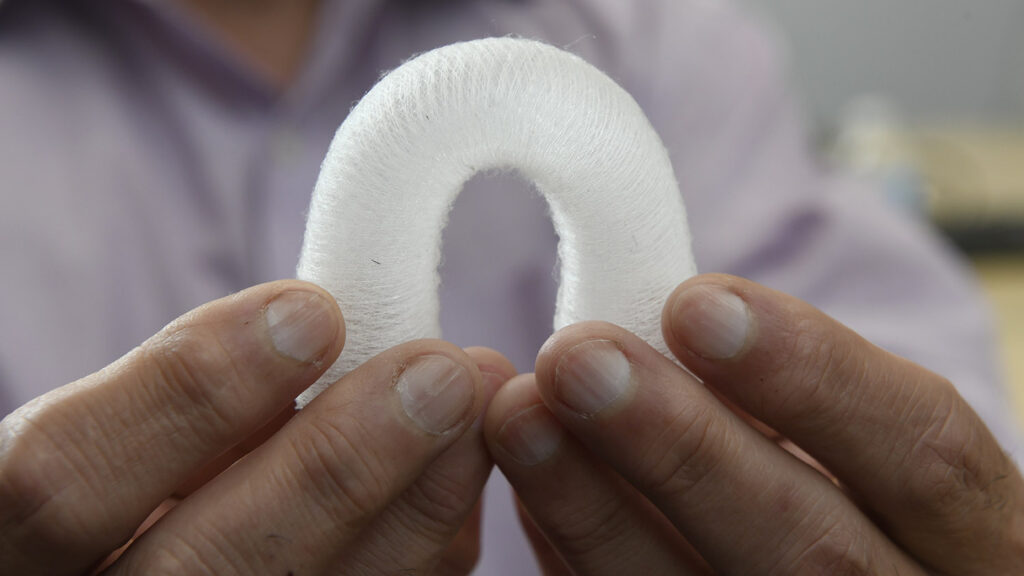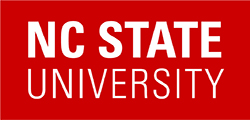Game-Changing Research Incentive Program
The Game-Changing Research Incentive Program (GRIP) awarded $2.3 million in seed funding to five collaborative, ground-breaking projects in nanotechnology, education, textiles, genetics and chemistry. These projects tackled challenges in new, innovative ways — and thanks to GRIP funding, performed significant research.
Program Successes
GRIP has proven to be a successful collaborative effort, resulting in:
- Over $56 million in extramural funding thus far, including several large grants and three faculty scholar awards
- Five patents filed
- One startup company — which has attracted $2.7 million in venture capital
- Sixteen publications
- Fifty-one posters/presentations
- Four large-scale extramural proposals under or pending review
- Thousands of students and teachers impacted across the state of North Carolina
GRIP also led to the Game-Changing Research Incentive Program for the Plant Sciences Initiative (GRIP4PSI), a similar large-scale seed funding program focusing on the Plant Sciences Initiative (PSI).
Water Sustainability through Nanotechnology: Nanoscale Science and Engineering at the Solid-Water Interface
A highly collaborative, multi-disciplinary team worked on ” Water Sustainability through Nanotechnology: Nanoscale Science and Engineering at the Solid-Water Interface” — building connections across organizations and expertise to develop opportunities for sustainability research.
The project brought together researchers from NC State, the University of North Carolina at Chapel Hill, Duke University and RTI International. Their expertise included environmental engineering, chemical engineering, material sciences and water resources. While they often work in separate fields, the Water Sustainability through Nanotechnology project allowed them to create new proposals and develop partnerships that are still active.
“GRIP provided a very unique opportunity to try something entirely new,” said Jacob Jones, a primary investigator on the project. “The landscape of funding rewards innovation in consistent areas. If I have an established record in one area, I have credibility there, but where do you go for funding if you want to try something different? GRIP trusted people with their ideas instead of whether they’re established in a specific area.”
Computer Science for All K-12 Students
The “Computer Science for All K-12 Students” project brought together researchers specializing in primary and secondary education, computer science education, and education policy to examine various challenges and start creating possible solutions.
“The flexible funding wasn’t intimately tied to particular objectives like a research grant,” said Eric Weibe, one of the researchers on the project. “It really allowed us to coordinate individual disparate lines of work and have a stream of funding that provided resources and opportunities to work together.”
With GRIP funding, researchers were able to collect pilot data and write proposals for future funding opportunities. A grant from the National Science Foundation, EcoCS, connected the Friday Institute and Reedy Creek Magnet Middle Middle School Center for the Digital Sciences to study computational thinking in school culture.
3D Printing of Fibrous Tissue Engineered Medical Products: A New Paradigm for Tissue Biofabrication and Therapeutics
The team behind “3D Printing of Fibrous Tissue Engineered Medical Products: A New Paradigm for Tissue Biofabrication and Therapeutics” developed a meltblowing unit to create 3D structures from fibers. The researchers created and tested flat sheets with different mechanical properties, tubular structures — and even a 3D-printed knee meniscus.
“This was an opportunity to build a platform that could offer unique structures for various applications,” said Behnam Pourdeyhimi, a primary investigator on the project. “It also was an opportunity to build an interdisciplinary team that could come together to address some of the grand challenges in tissue engineering.”

The team has continued to make structures from newer material, and it has received external funding to keep working in tissue engineering.
The NCSU/RTI Program In Genetic Discovery and Prediction (PGDP)
By compiling an unprecedented number of genome-wide association studies, “The NCSU/RTI Program In Genetic Discovery and Prediction” project focused on extracting insights from existing data. The team pursued multiple lines of inquiry, which led to major proposals for centers dedicated to dissecting the relationships among genetics, disease and personalized medicine.
“The GRIP mechanism was the perfect vehicle to bring together expertise from NC State and RTI, as well as other groups, such as The Renaissance Computing Institute (RENCI), in order to facilitate interactions and ultimately new projects and proposals that otherwise would not be possible,” said Fred Wright, a primary investigator for the project. “We have a wealth of statistical genetics expertise at NC State, but less expertise in some aspects of data access, large meta-storage issues, and artificial intelligence applied to personalized medicine. Having funding to engage with these other groups and to pursue large initiatives has been crucial.”
Now, researchers are examining proposed mega-studies, which will combine thousands of datasets on disease-gene associations, as well as looking toward expanding natural language processing of the biomedical literature to study new associations of genes with disease.
Electroluminescence Upconverstion
The team behind the “Electroluminescence Upconversion” project had a novel idea: combine the energies of two molecules’ excited states to create fluorescence in blue. In LED and other lighting technology, blue molecules die and decompose the fastest, so items often carry more blue material to compensate. But through this upconversion, diodes that emit blue light can last longer.
“The concept was very high-risk,” said Felix Castellano, one of the project’s primary investigators. “It was an unproven idea at the time. Most funding agencies don’t want to engage in something that’s that high risk unless you have the preliminary data to show you can prove it. The GRIP funding allowed us to do the experiments to get to the proof of principle.”
Since demonstrating proof of principle, the research team has launched a startup company — New Fusion — and received U.S. and international patents. Venture capitalists have invested nearly $3 million. The research was published in Nature Communications in 2019.


